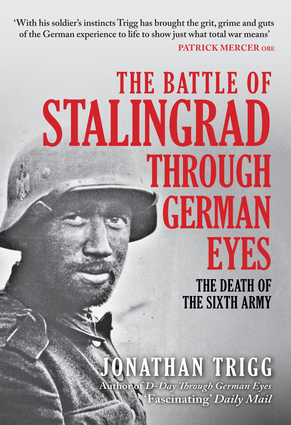Overview
Jonathan Trigg reveals the human agony behind such statistics through the words of the Germans who were there: ‘You’ll regret this insulting, provocative and thoroughly predatory attack on the Soviet Union! You’ll pay dearly for it!’ (Dekanazov, Soviet Ambassador in Berlin). The Germans did. But the butcher’s bill was huge for both sides.
Five months, one week and three days of hell. The German offensive to capture Stalingrad began in August 1942, using the 6th Army and elements of the 4th Panzer Army. The attack was supported by intense bombing that reduced much of the city to rubble. The battle degenerated into house-to-house fighting, as both sides poured reinforcements in. By mid-November, the Germans had pushed the Soviet defenders back at great cost into narrow zones along the west bank of the Volga.
On November19, the Red Army launched Operation Uranus, targeting the weaker Romanian and Hungarian armies protecting the 6th Army's flanks. The flanks were overrun and the 6th Army was cut off and surrounded. Hitler was determined to hold the city - the symbolic birthplace of detested Bolshevism - and forbade the 6th Army from attempting a breakout; in February 1943, without food or ammunition, something like 290,000 Germans surrendered. The losses on both sides were stupendous - the Soviets suffered something approaching half a million dead and more than 650,000 wounded or sick – and in his unique style author Jonathan Trigg reveals the human agony behind such statistics through the words of the Germans who were there.
Was it all over after the surrender? Of course not. Death marches did for many: Landser Josef Farber remembered: ‘We set out with 1,200 men … about 120 were alive when we reached the camp.’Author Biography
Jonathan Trigg has an honors degree in History and served in the British Army, completing operational tours in Northern Ireland and Bosnia, and latterly acting as a military instructor to friendly governments in the Arabian Gulf. He has written extensively, although not exclusively, on the Second World War, specializing in the fighting on the Eastern Front, and non-Germans who served in the Waffen-SS. A regular expert contributor to all aspects of media, including TV and a range of magazines including History of War, All About History and The Armourer. He also often features on radio; BBC Radio 4, Talk Radio, Newstalk, and in a large number of podcasts, such as ww2podcast.com, History Hack and History Hit. His previous books include 'Death on the Don: The Destruction of Germany’s Allies on the Eastern Front' and 'D-Day Through German Eyes'.

